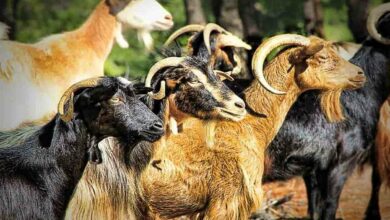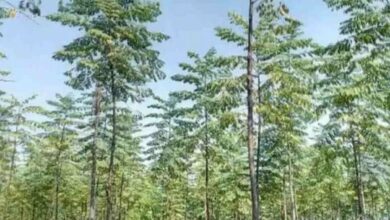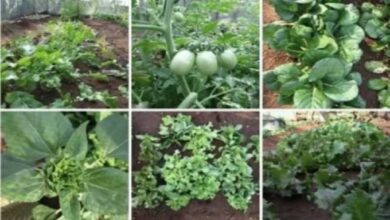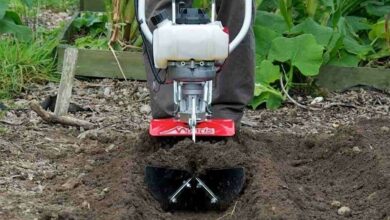Chickpea Cultivation: Adopt this method in the cultivation of chickpea, you will get bumper yield
Chickpea Cultivation: India is the biggest producer, importer, and consumer of pulses worldwide. While Indians eat 27% of the world’s pulse output, we only contribute 25% of the world’s pulse production. Since there is only a 2% gap between production and consumption, 14% of the world’s pulse commerce must be imported. This is the case when 20% of the nation’s total agricultural area is used for the production of pulses. However, pulses only make about 7% to 10% of the overall amount of food grains produced. Rabi, Kharif, and Basant (summer) are the three seasons in which pulses are farmed. While chana, peas, and rajma are produced in the Rabi season, arhar, urad, and moong are mostly cultivated in the Kharif season.
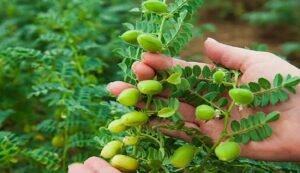
Consumption of Pulses is more than Production
Sixty percent of all pulses are produced during the Rabi season. Even while the output of pulses is expanding annually, demand is growing even more quickly, which causes imports to rise. India mostly imports pulses from Canada, Zimbabwe, Mozambique, and Myanmar. Even now, pulses and oilseeds are not self-sufficient in terms of food grains. However, the amount of wheat and paddy produced by our farmers is significantly more than what is kept in the national store. Every year, a significant amount is squandered because of storage issues. For this reason, governments are pushing farmers to produce more oilseeds and pulses rather than wheat and rice.
Popular Chickpea Products in India
Among pulses, gram has a significant position, and India is the world’s top producer, accounting for 70% of global gram output. More than 28 million tons of pulses, of which 12.0 million tons were gram, were produced in India in 2023. Nevertheless, 150,000 tons of gram had to be imported into India. Gram is grown in both irrigated and non-irrigated (rain-dependent) regions of India. Chickpeas are a nutrient-dense pulse that has 4 percent fat, 61% carbs, and 21% protein.
Popular Chickpea Products in India
A popular edible chickpea, particularly in India, chana is often referred to as Bengal gram or Bengal gram. Chickpea seeds are a rich source of nutrition in many meals since they contain two to three peas per seed.
Gram Flour: Often referred to as “gram flour,” this flour is a staple in many Indian homes and is manufactured from crushed chickpeas. It may be used to thicken sauces and make batters, among other recipes.
Chana Dal: Whole organic chickpeas are chopped and their outer layer removed to make chana dal, also called Bengali gram dal. Because of its low glycemic index, it is a staple in every Indian home and particularly popular among diabetics.
Sattu: Made from roasted chickpeas, sattu flour is a great source of iron, sodium, fiber, protein, and magnesium, among other nutrients. It is referred to as the “protein of the poor” due to its low cost and significant health benefits.
Laddoo: Made of chickpea flour, sugar, and spices, laddoo is a famous Indian delicacy. Chickpea flour batter is fried, combined with sugar syrup, nuts, and seeds, and then shaped into rounds.
Yield of Chickpea
About half of India’s pulse output comes from chickpeas, making them a significant part of the country’s agricultural landscape. With a 25.97% share in the national output, Maharashtra is the largest producer, followed by Madhya Pradesh (18.59%), Rajasthan (20.65%), Gujarat (10.10%), and Uttar Pradesh (5.64%). The chickpea market is anticipated to expand at a Compound Annual Growth Rate (CAGR) of 6.5%, reaching $19.19 billion by 2027. With 5.87% of the world market for chickpea exports, India came in fifth place in 2021; on the other hand, it accounted for 12.51% of imports. Despite having 44.46% of the national share, Madhya Pradesh and Maharashtra produce less than the national average. This is concerning, particularly in light of the fact that the nation has enhanced cultivars that can produce 18 to 21 quintals per hectare. The use of appropriate technology and agricultural methods is required to increase chickpea yield.
Climate and Soil
The land must be well ploughed before chickpeas are planted. Aside from this, since chickpeas grow in a dry, cold environment, it’s also critical to ensure sure the field has enough drainage. A well-drained, deep, loamy, or silty clay loam soil with a pH of 6.0 to 8.0 is good for growing chickpeas. Warm climates with temperatures between 24 and 30 degrees Celsius are ideal for chickpea plant growth.
Better Types of Chickpeas and Their Features
- PBG 10: It takes around 153 days for it to develop. It yields 8.6 quintals per acre on average.
- PBG 8: It takes around 158 days for it to develop. It yields 8.4 quintals per acre on average.
- PBG 7: It takes around 159 days for it to develop. It yields 8.0 quintals per acre on average.
- Desi Chickpea (Rainfed) PDG 4: It takes around 160 days for it to develop and has bold seeds. It yields 7.8 quintals per acre on average.
- Kabuli Chana L 552: It takes around 157 days for it to mature. It yields 7.3 quintals per acre on average.
Cultivation and Sowing Time
In Punjab, the ideal period to plant chickpeas is between October 10 to October 25 if they are rainfed, and October 25 if they are irrigated.The dates for sowing are November 10–11. Additional advice for planting chickpeas: Ten centimeters should separate seeds, and thirty to forty centimeters should separate rows. Plant seeds 10–12.5 cm below the surface. Create a raked seedbed in thick soils to aid with aeration and avoid sticky surfaces.
Irrigation in Chickpea Cultivation
A crop that is sensitive to water, chickpeas (Cicer arietinum L.) may be irrigated or rainfed. Before planting, as well as throughout the branching and pod development phases, chickpea plants may be watered. Irrigation during early blooming might assist boost output if temperatures are low and frosts occur often.
Disease and Pest Treatment
Wilt, leaf spot, and root rot are common diseases that affect chickpea crops. In addition, the field should be deep ploughed in the summer months of May and June if there is a chance of a Katua and Semilooper pod infestation. Additionally, create little mounds of dry grass around the area so that Katua caterpillars may hide there throughout the day.
The next morning, this mound need to be burned. This kind of soil treatment is also extremely helpful in avoiding wilt disease. Using seeds of wilt-resistant types when you plant is the best approach to prevent wilt. However, for three to four years, gram crops should not be planted in wilt disease-infected fields.
Weed Control
If chemical weed control is to be used, one liter of fluchloralin 45% EC should be dissolved in about 400 liters of water per acre and sprayed into the soil prior to gram planting. Additionally, two to three days after seeding, pendimethalin and twenty to thirty days after that, quesalofop-ethyl may be used to manage narrow-leaf weeds. The weeds should be removed with a traditional hoe if pesticides are to be avoided.
Increasing the amount of tillage Increased tillage could aid in the management of weeds such grama grass, wild barley, stinkweed, and kochia. On some weeds, such blue grass, clover, groundsel, cleavers, and smartweed, tillage could have the reverse effect. The most crucial period for controlling weeds is the first 30 to 60 days after germination.


